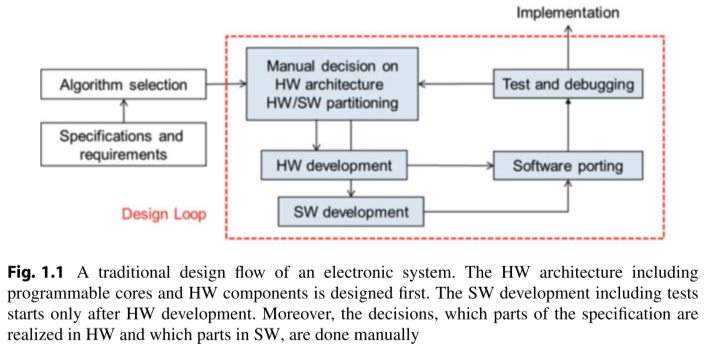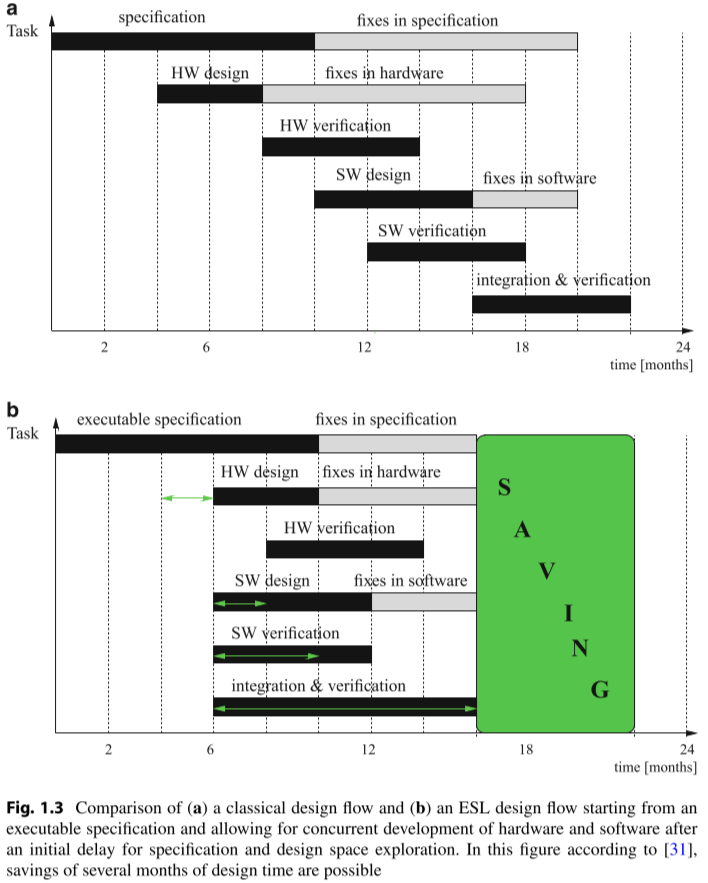[Glean] Hardware/Software Codesign
Hardware/Software Codesign1
As the name implies, Hardware/Software Codesign (HSCD) denotes design methodologies for electronic systems that exploit the trade-offs and the synergy of Hardware (HW) and Software (SW).
Typically, the application functionality is partitioned into software components that are running on the processor cores and hardware components that are used to accelerate some parts of the application or to provide interfaces to the environment.
In the traditional design practice for such systems, software is usually designed after the hardware architecture is fixed. After this HW/SW partitioning for the determined hardware architecture, two groups of engineers work independently to design and implement the hardware components and software components.

As the system complexity increases, the above traditional design flow faces several challenges. It is evident that the critical path in the design process becomes prohibitively long and costly in case multiple iterations of the sequential flow are performed from HW and SW development, software porting, and testing.
HW/SW codesign shortens the critical path of the design loop by estimating the performance fast and accurately for a given hardware platform and HW/SW partitioning decision without hardware prototyping.


-
Handbook of Hardware/Software Codesign ↩